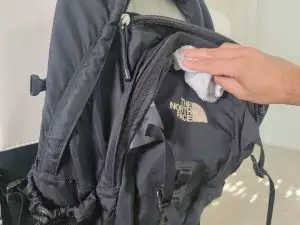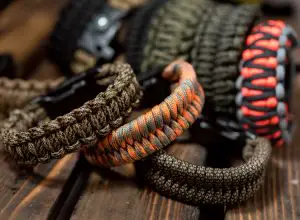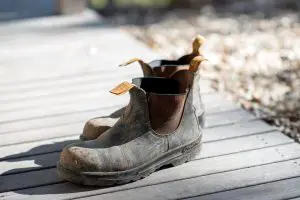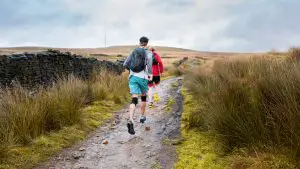Sore Legs After Hiking: Causes, Care and Prevention
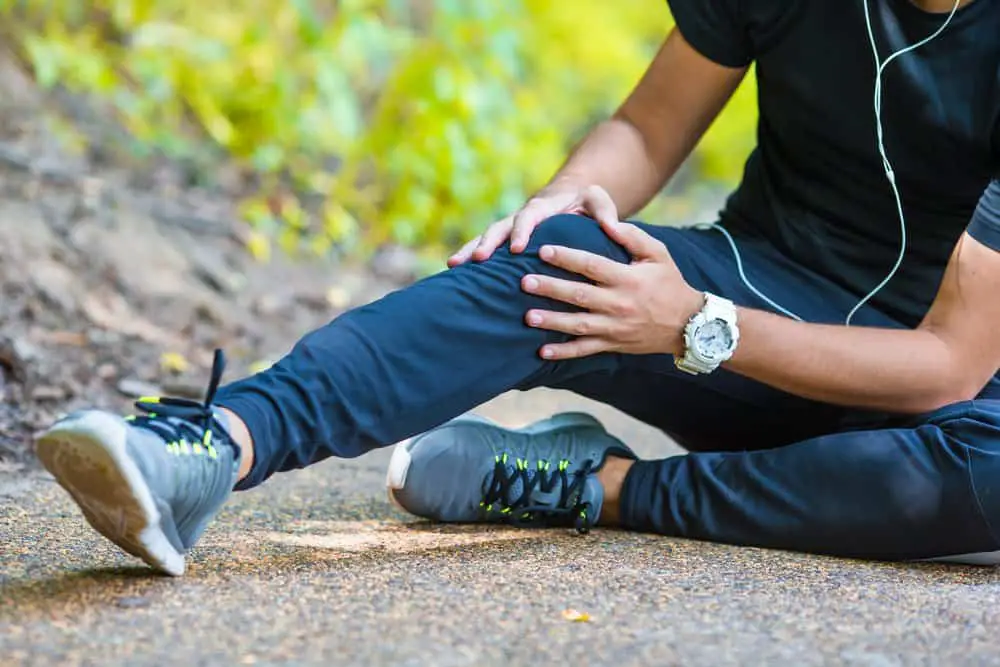
Muscle soreness is a common side effect of hiking, especially if you’re not used to the activity. Although it can feel quite uncomfortable, having sore legs after hiking is perfectly normal and usually nothing to worry about.
As a matter of fact, I like to look at it as a sign that you worked hard on your hike and challenged your muscles. So, I’m going to cover a few things in this post that should help you understand why your legs might be sore after hiking and some tips on how to ease the discomfort.
Quick Links
Why Do You Get Sore Legs After Hiking?
If you workout, or go to the gym often, you’re probably familiar with the feeling of DOMS (delayed onset muscle soreness). This is when your muscles feel achy and tender to touch, usually around 24-48 hours after exercise. DOMS is caused by microscopic tears in your muscle fibers and is completely normal. In fact, it’s often seen as a sign of a pretty good workout.
The same goes for hiking. When you hike, you’re using your leg muscles in a way that they’re not used to. This can lead to microscopic tears and, as a result, DOMS.
DOMS Explained
When you exercise, your muscles contract and shorten. This causes the tiny fibers within the muscle to stretch. If the muscles are worked hard enough, these fibers can tear. The process of the fibers tearing and then repairing is what makes your muscles stronger. And it sounds way scarier than it actually is, the tears are so small that you can’t see them with the naked eye.
However, this process can also lead to soreness. The tears in the muscle fibers cause inflammation. This is a natural process that helps to heal the muscles, but it can also cause discomfort. If you’ve had a pretty serious leg workout, you might even be limping a little bit. This is all perfectly normal and nothing to be concerned about.
The good news is that the soreness from DOMS is usually only temporary. It typically peaks around 48 hours after exercise and then starts to improve.
How to Ease Sore Legs After Hiking
Now that we know why your legs might be sore after hiking, let’s talk about how to ease the discomfort. Here are a few tips:
Apply heat or ice
Applying heat or ice to your muscles can help to ease pain and inflammation. Heat will increase blood flow to the area, which can help to speed up the healing process. Ice will help to reduce inflammation. There is also hot/cold therapy, which alternates between heat and ice. When I deal with sciatica pain flare-ups, I find that this works best for me.
Use compression
Compression can also help to reduce inflammation and pain. You can use a compression bandage or sleeve. I like to use compression socks when my legs are feeling sore. They’re especially helpful if you have to spend a lot of time on your feet.
Take a warm bath
Nothing’s better than a warm bath! Soaking in a tub can help to reduce pain and relax your muscles. Add some Epsom salt to the water for an extra soothing effect. Epsom salt breaks down into magnesium in water, which is said to help to reduce inflammation. Although it hasn’t been scientifically proven to aid in fighting inflammation, many people swear by it. Either way, a warm bath can definitely help with achy muscles.
Get a massage
A massage can also help to reduce pain and inflammation. It can also help to improve blood circulation and flexibility. If you don’t have time for a professional massage, you can try using a foam roller or tennis ball.
Recommendation: After some friends kept selling me how great their Theragun was, I caved in and bought one a few months ago. Although quite pricey, it has been amazing for post-workouts, including cardio like hiking. If you don’t mind the price point, consider checking out a Theragun for aiding in muscle soreness.
Stretch it out
Stretching can help to improve flexibility and range of motion. It can also help to prevent injuries. And most people I know, including the ones that work out religiously, absolutely hate stretching.
If you’re one of those people that hates stretching, then at the very least perform some basic stretches after your hike while your muscles are still warm. This will help to reduce the risk of injury and make the next day’s hike much more enjoyable.
These days, I like to do a light stretching routine before and after hikes. This helps to warm up my muscles and reduce the risk of strains or pulled muscles. I used to be one of those people that didn’t stretch at all. Unfortunately, it caught up to me. So take it from me – stretch those muscles!
Take it easy
It’s important to listen to your body and give yourself time to recover. If your legs are really sore, take a day or two off from hiking. If you can still walk, try taking a shorter hike or hiking at a slower pace. You might also want to consider cross-training on days when your legs are feeling especially sore.
Is It Common To Get Sore Legs After Hiking All the Time?
If you find that your legs are always sore after hiking, there are a few possible explanations. It could be that you’re not properly stretching or warming up before hikes. It could also be that you’re pushing yourself too hard on the trails.
If you jump into a hardcore & challenging hike after NEVER hiking before, you will absolutely feel sore. But if you’ve been hiking consistently and you’re constantly feeling sore, take a step back and reassess your training routine. At this stage, you should be building a tolerance to hiking and feel good most of the time – with some soreness here or there after a long or difficult hike.
You might also want to consider seeing a doctor or physical therapist to rule out any other underlying issues.
Is It Okay to Hike with Sore Legs?
If your legs are only slightly sore, you can probably still hike. But if they’re really throbbing and painful, it’s best to take a day or two off.
Even if the pain is manageable, hiking with sore legs can actually make the pain worse. When your muscles are already inflamed, they’re more susceptible to further injury. So it’s best to rest up and give your legs time to recover.
If you’ve ever followed a workout routine, they are usually structured in a way where you alternate days of high-impact workouts with days of lower-impact or no-impact workouts. This is to allow your body time to recover in between those high-intensity days. Alternatively, you’ll focus on one major body group per day to give that muscle group time to recover. You’re not gonna see a workout routine that tells you to work out your legs on a Monday, then again on Tuesday, and again on Wednesday. Makes sense?
The same concept applies to hiking. If you go hiking with sore legs one day, take the next day off or at least go for an easy walk instead. Your legs need time to recover and heal in between hikes, especially if those hikes are strenuous.
Tips To Prevent Sore Legs Before and During Your Hike
There are a few things you can do to prevent or reduce the amount of soreness you feel after a hike. First, make sure you’re properly stretching and warming up before hitting the trails. A good warm-up routine will help to increase blood flow to your muscles and reduce the risk of injury. And it doesn’t need to be complicated – a simple 10-minute walk will do the trick.
Second, start off slow and gradually increase the intensity of your hikes. If you go too hard, too fast, your muscles will be more likely to become overloaded and stressed. It’s better to build up slowly so your muscles have time to adjust. Rome wasn’t conquered in a day!
Hydrate yourself and fuel your body properly before and during hikes. This will help to prevent fatigue and muscle cramps. Make sure you’re drinking plenty of water and carrying snacks or energy bars with you on the trail. And speaking of food, make sure you’re eating a balanced diet with plenty of protein to support your muscles. I won’t cover how much protein you should be eating as it depends on a host of factors, but just know that protein is important for muscle growth and recovery.
Conclusion
At the end of the day, your body is your temple. Only you know how it feels and what it needs. Listen to your body and don’t push yourself too hard, all the time. If your legs are always sore after hiking, maybe take a step back and reassess your training routine.
Are you stretching enough? Or warming up and cooling down? Are you giving yourself enough time to recover between hikes? These are all important factors to consider. I hope this article was helpful! If you have any questions, feel free to leave a comment below and I’ll get back to you as soon as I can. Happy hiking!

